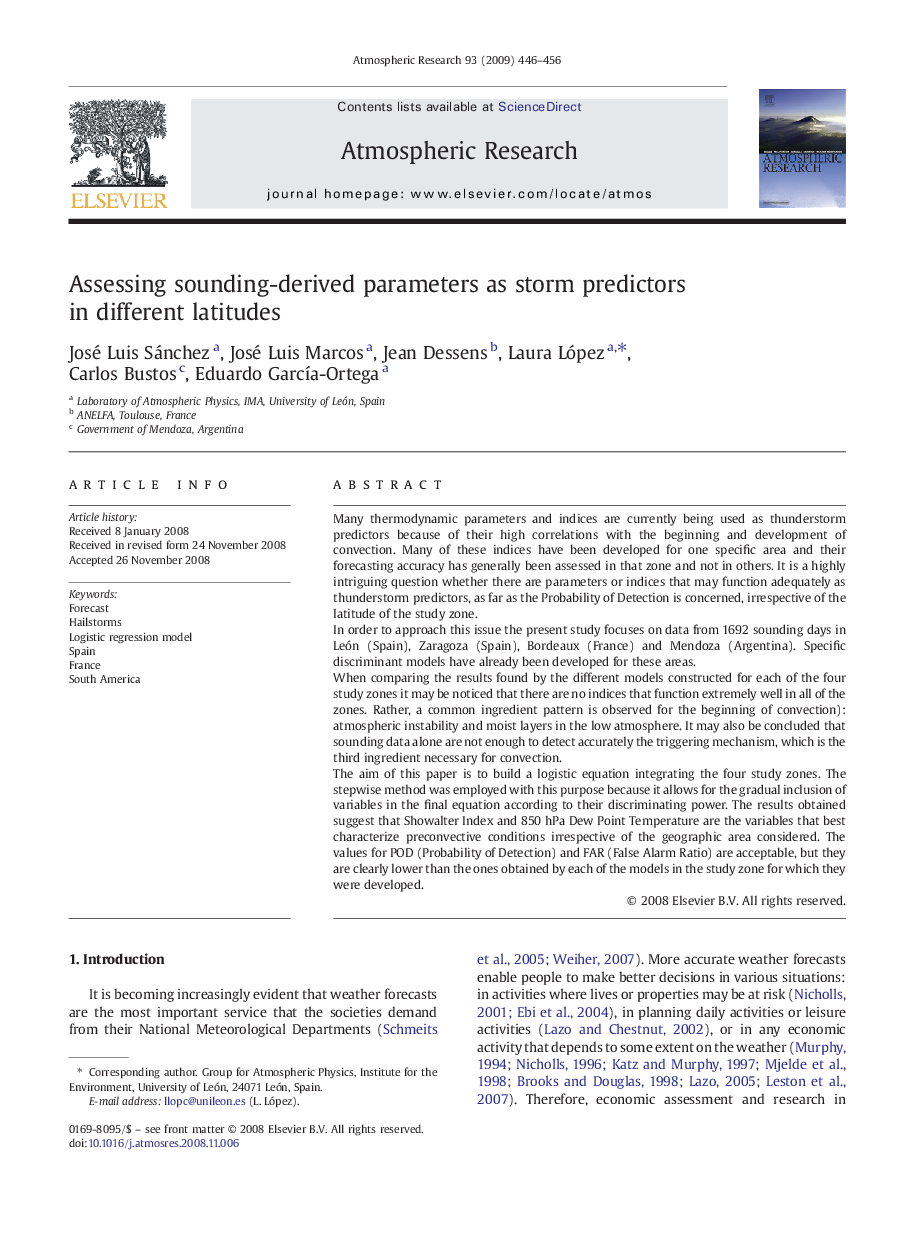| Article ID | Journal | Published Year | Pages | File Type |
|---|---|---|---|---|
| 4450738 | Atmospheric Research | 2009 | 11 Pages |
Many thermodynamic parameters and indices are currently being used as thunderstorm predictors because of their high correlations with the beginning and development of convection. Many of these indices have been developed for one specific area and their forecasting accuracy has generally been assessed in that zone and not in others. It is a highly intriguing question whether there are parameters or indices that may function adequately as thunderstorm predictors, as far as the Probability of Detection is concerned, irrespective of the latitude of the study zone.In order to approach this issue the present study focuses on data from 1692 sounding days in León (Spain), Zaragoza (Spain), Bordeaux (France) and Mendoza (Argentina). Specific discriminant models have already been developed for these areas.When comparing the results found by the different models constructed for each of the four study zones it may be noticed that there are no indices that function extremely well in all of the zones. Rather, a common ingredient pattern is observed for the beginning of convection): atmospheric instability and moist layers in the low atmosphere. It may also be concluded that sounding data alone are not enough to detect accurately the triggering mechanism, which is the third ingredient necessary for convection.The aim of this paper is to build a logistic equation integrating the four study zones. The stepwise method was employed with this purpose because it allows for the gradual inclusion of variables in the final equation according to their discriminating power. The results obtained suggest that Showalter Index and 850 hPa Dew Point Temperature are the variables that best characterize preconvective conditions irrespective of the geographic area considered. The values for POD (Probability of Detection) and FAR (False Alarm Ratio) are acceptable, but they are clearly lower than the ones obtained by each of the models in the study zone for which they were developed.
